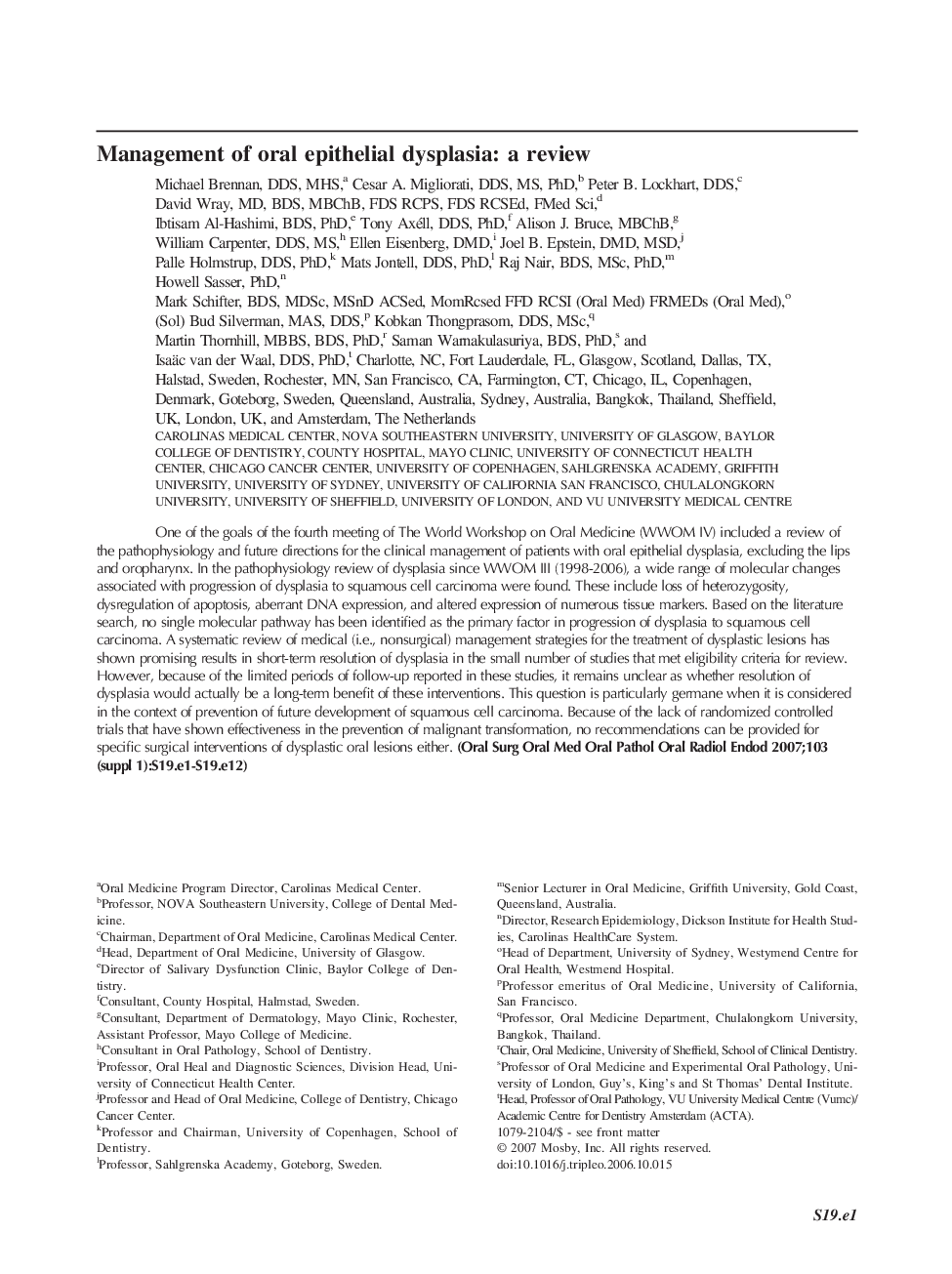| Article ID | Journal | Published Year | Pages | File Type |
|---|---|---|---|---|
| 3169641 | Oral Surgery, Oral Medicine, Oral Pathology, Oral Radiology, and Endodontology | 2007 | 12 Pages |
Abstract
One of the goals of the fourth meeting of The World Workshop on Oral Medicine (WWOM IV) included a review of the pathophysiology and future directions for the clinical management of patients with oral epithelial dysplasia, excluding the lips and oropharynx. In the pathophysiology review of dysplasia since WWOM III (1998-2006), a wide range of molecular changes associated with progression of dysplasia to squamous cell carcinoma were found. These include loss of heterozygosity, dysregulation of apoptosis, aberrant DNA expression, and altered expression of numerous tissue markers. Based on the literature search, no single molecular pathway has been identified as the primary factor in progression of dysplasia to squamous cell carcinoma. A systematic review of medical (i.e., nonsurgical) management strategies for the treatment of dysplastic lesions has shown promising results in short-term resolution of dysplasia in the small number of studies that met eligibility criteria for review. However, because of the limited periods of follow-up reported in these studies, it remains unclear as whether resolution of dysplasia would actually be a long-term benefit of these interventions. This question is particularly germane when it is considered in the context of prevention of future development of squamous cell carcinoma. Because of the lack of randomized controlled trials that have shown effectiveness in the prevention of malignant transformation, no recommendations can be provided for specific surgical interventions of dysplastic oral lesions either.
Related Topics
Health Sciences
Medicine and Dentistry
Dentistry, Oral Surgery and Medicine
Authors
Michael DDS, MHS, Cesar A. DDS, MS, PhD, Peter B. DDS, David MD, BDS, MBChB, FDS RCPS, FDS RCSEd, FMed Sci, Ibtisam BDS, PhD, Tony DDS, PhD, Alison J. MBChB, William DDS, MS, Ellen DMD, Joel B. DMD, MSD, Palle DDS, PhD, Mats DDS, PhD, Raj BDS, MSc, PhD,
